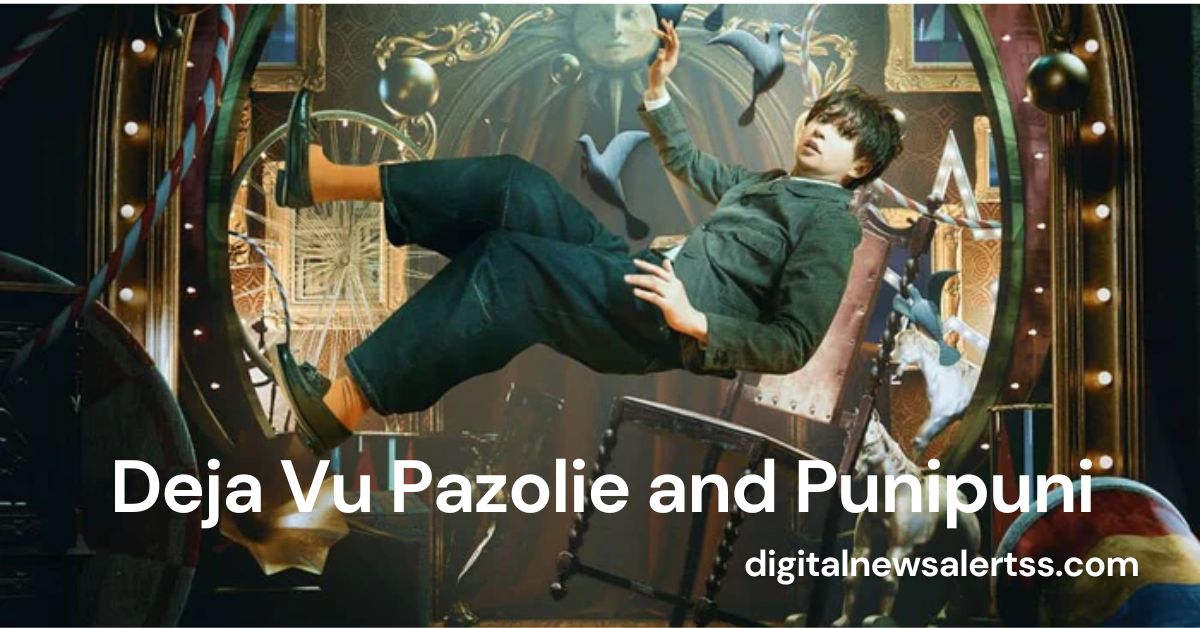In recent years, the concept of “Deja Vu Pazolie and Punipuni” has been gaining attention in discussions around memory, imagination, and playfulness. At first glance, it might seem like a random combination of words, but it represents a much deeper and interesting cultural phenomenon. This article will take a comprehensive look at “Deja Vu Pazolie and Punipuni” from its origins to its significance in modern culture, combining both historical analysis and unique insights to present a clear understanding of this idea.
What is Deja Vu Pazolie and Punipuni?
At its core, “Deja Vu Pazolie and Punipuni” combines three different ideas:
- Deja vu represents the sensation of feeling like something has happened before.
- Pazolie symbolizes creativity and imagination.
- Punipuni reflects softness and playfulness.
Together, they create a concept that reflects the fusion of memory, imagination, and playfulness. It’s a state of mind or experience where familiarity meets creativity, producing a soft and whimsical sense of joy. People describe it as a nostalgic, imaginative journey where old memories are reborn in new and creative ways.
The Origins of Deja Vu, Pazolie, and Punipuni
Deja Vu
“Deja vu” is a French term meaning “already seen,” describing the sensation of having experienced something before, even when it’s happening for the first time. It’s a psychological phenomenon widely studied in fields such as neurology and psychology, with experts believing it’s related to memory processing.
Pazolie
While “pazolie” is a less familiar term, it has come to represent creativity and imagination. It symbolizes the spontaneous spark of ideas, the limitless potential of the human mind to dream and create something new.
Punipuni
“Punipuni” originates from Japanese culture, often used to describe something soft or squishy, like a plush toy. It conveys a sense of playfulness, softness, and joy, evoking a feeling of childhood innocence.
How Memory, Creativity, and Softness Interact
The interaction between deja vu (memory), pazolie (creativity), and punipuni (softness) creates a unique mental and emotional experience.
- Memory (Deja vu): Our memories create familiarity and recognition.
- Creativity (Pazolie): Creativity reshapes those memories, forming new ideas from old experiences.
- Softness (Punipuni): This softness adds a layer of comfort and playfulness, turning the experience into something warm and pleasant.
Together, these concepts create a feeling of revisiting old memories with a playful and imaginative twist.
Deja Vu: The Feeling of Familiarity
Deja vu is an intriguing mental phenomenon that almost everyone has experienced at some point in life. It can make you feel like you are reliving a moment you’ve never actually experienced before. While researchers continue to study the neurological basis of deja vu, it remains a mysterious and fascinating subject.
In the context of “Deja Vu Pazolie and Punipuni,” deja vu plays an important role because it taps into familiar memories, allowing us to use these recollections as the foundation for creative and playful reinterpretations of reality.
Pazolie: A Symbol of Creative Imagination
Pazolie is the heart of the creative process within this concept. It takes the familiar feelings brought by deja vu and reshapes them into something entirely new.
For example, think of a childhood memory where you were at a playground. Now, imagine adding elements of fantasy, where the playground becomes a magical world. That’s pazolie in action—transforming the ordinary into the extraordinary through imagination.
Creative imagination is the key to seeing the world not as it is, but as it could be. Pazolie represents this ability to break away from the confines of reality and generate something entirely fresh.
Punipuni: The Element of Playfulness and Softness
The term “punipuni” often brings to mind soft, squishy objects like plush toys. In the context of “Deja Vu Pazolie and Punipuni,” it adds a sense of playfulness and lightness.
Punipuni represents the idea that life doesn’t always have to be serious or rigid. The concept encourages embracing softness and enjoying the simple pleasures of life, such as engaging in playful activities, or even enjoying something comforting like a favorite toy from childhood.
The Cultural Significance of Deja Vu Pazolie and Punipuni
The fusion of these three concepts into “Deja Vu Pazolie and Punipuni” speaks to a broader cultural trend of embracing creativity, softness, and memory. Modern society often pushes people toward being more productive, serious, and logical. However, there’s a growing movement that encourages playfulness, imagination, and nostalgia.
In today’s fast-paced world, many people crave experiences that allow them to reconnect with their inner child. “Deja Vu Pazolie and Punipuni” captures this desire by offering a framework for revisiting memories in a creative and soft way, providing a sense of comfort in an often chaotic world.
Deja Vu Pazolie and Punipuni in Modern Media and Art
The idea of combining memory, creativity, and playfulness is not new, but “Deja Vu Pazolie and Punipuni” takes it to a new level. These concepts are being explored in various forms of art and media.
- Film: Many movies play with the concept of deja vu, where characters experience familiar events that turn into imaginative adventures.
- Music: Musicians often revisit old melodies and reimagine them in new, creative ways, adding a sense of nostalgia with a fresh twist.
- Art Installations: Punipuni’s influence can be seen in playful, soft, and squishy art installations that encourage people to interact with objects in a tactile way, bringing an element of joy and softness.
Why Is “Deja Vu Pazolie and Punipuni” Gaining Popularity in the USA?
The USA has always been a melting pot of ideas, and people are increasingly seeking out experiences that combine creativity and comfort. “Deja Vu Pazolie and Punipuni” taps into this by offering a way to bring back childhood memories and imagination while adding a comforting and playful touch.
This concept appeals to a wide audience, from children to adults looking to reawaken their sense of wonder. In the face of stressful daily life, people want experiences that allow them to reconnect with their imagination in a fun and relaxing way.
How Can You Incorporate Deja Vu Pazolie and Punipuni into Your Daily Life?
Bringing “Deja Vu Pazolie and Punipuni” into your life is simple. Here are a few ways to do it:
- Revisit your favorite childhood activities: Whether it’s playing with toys or watching cartoons, allow yourself to reconnect with the past in a creative way.
- Create something new out of an old experience: Take an old memory or hobby and put a new spin on it. For example, if you loved drawing as a child, try experimenting with new art forms.
- Embrace softness and playfulness: Incorporate playful, soft objects into your life—whether it’s something physical like a plush toy or a mental exercise in playfulness.
By blending familiar memories with creative imagination and a sense of play, you can enrich your daily experiences.
Conclusion
“Deja Vu Pazolie and Punipuni” offers a unique way of experiencing life by blending memory, creativity, and playfulness. It’s a fusion of familiar sensations with imaginative reinterpretation and a touch of softness that appeals to people of all ages. By incorporating elements of “Deja Vu Pazolie and Punipuni” into your life, you can enjoy a richer, more whimsical way of thinking about the world around you.
FAQs
What does “Deja Vu Pazolie and Punipuni” mean?
“Deja Vu Pazolie and Punipuni” refers to the fusion of memory (deja vu), creativity (pazolie), and softness/playfulness (punipuni). It represents revisiting old memories in a creative and playful way.
Where did the term “Punipuni” come from?
“Punipuni” is a Japanese term often used to describe soft or squishy objects. In the context of “Deja Vu Pazolie and Punipuni,” it represents playfulness and softness.
How can I incorporate “Deja Vu Pazolie and Punipuni” into my life?
You can incorporate it by revisiting old memories, engaging in creative activities, and embracing playfulness and softness in your daily experiences.
Why is “Deja Vu Pazolie and Punipuni” gaining popularity?
The concept is gaining popularity because it taps into modern desires for creativity, comfort, and nostalgia, offering a way to balance the stress of daily life with playful and imaginative experiences.



